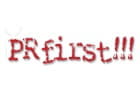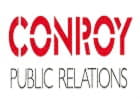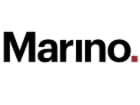Recessions are common enough that you can count on several of them impacting your portfolio over the course of even a 10-year time horizon. That's just one reason why consumer staples stocks -- businesses that produce essentials such as toothpaste, toilet paper, razors, and diapers -- are so popular among investors.
In contrast to discretionary products like homes, cars, and restaurant meals, demand for staples holds up even during economic disruptions. That makes them good stocks to have in your portfolio when those surprise downturns occur.

IMAGE SOURCE: GETTY IMAGES.
The consumer staples industry
The consumer staples industry isn't the place for investors targeting head-turning sales and profit gains. After all, it is a large, mature market that's dominated by just a few players. Sure, innovation plays a part in driving demand for the latest household cleaning or personal care product. But, unlike in the tech world, there isn't much disruption from year to year among industry leaders. These giants in most cases are cashing in on brands that they've built out over many decades.
As a result, consumer staples stocks tend to be slow-growing businesses that generate plenty of excess cash -- money that they mainly give to shareholders through dividend payments and stock repurchase spending. If that sounds like your investing style, you should consider buying Procter & Gamble (NYSE:PG) and/or Johnson & Johnson (NYSE:JNJ) while keeping your distance from Kimberly-Clark (NYSE:KMB) today.
Procter & Gamble has momentum
Procter & Gamble dominates several huge global consumer categories, with 20% of hair care spending, 25% of the diaper industry, and 25% of the laundry niche spoken for through the Pantene, Pampers, and Tide franchises, respectively. And if you bought a razor recently, chances are good that you purchased it from P&G, given that the Gillette, Fusion, Venus, and Mach3 brands account for 65% of the worldwide shaving market.
That premium position has translated into impressive long-term returns for investors. P&G turned 15.7% of its sales into earnings last year, which helped fund its 61st consecutive annual dividend increase.
PG DIVIDEND DATA BY YCHARTS.
Be aware, though, that the consumer products titan is facing big challenges. It has posted three consecutive years of declining market share, for example, as value-based competition chips away at its core franchises. However, following a portfolio-slimming transformation, the company is on track for its second straight year of accelerating sales growth. Aggressive cost cuts, meanwhile, are providing plenty of room for CEO David Taylor and his executive team to invest in growth initiatives while sending more cash to shareholders.
Johnson & Johnson dominates the healthcare industry
For a bit more risk, and potentially higher return, investors should consider Johnson & Johnson stock. Its consumer products segment is anchored by big-name brands like Tylenol, Listerine, and Pepcid. It also includes the iconic Band-Aid franchise that got its start back in 1921, when Johnson & Johnson created the market for commercial dressings on small wounds. Since then, the company has sold over 100 billion Band-Aids.

IMAGE SOURCE: GETTY IMAGES.
Today, pharmaceutical sales are becoming a larger part of Johnson & Johnson's business, which makes it more susceptible to volatile sales and profit swings. Its fiscal 2011, for example, was negatively impacted by the patent expiration of two blockbuster drugs.
However, the combination of smart capital management and a uniquely diverse product portfolio (spanning medical device sales, pharmaceuticals, and consumer products) has ensured that the healthcare titan's returns trounced the broader market over the long term. With a $9-billion-plus annual commitment to research and development, meanwhile, Johnson & Johnson makes it all but impossible for any company to seriously challenge its position in the healthcare industry.
Avoid Kimberly-Clark for now
With its Huggies diaper brands sitting just behind P&G's leading Pampers franchise, Kimberly-Clark can't escape comparisons to its larger consumer staples rival. Most of those matchups are unfavorable to the runner-up these days, though.
Whereas Procter & Gamble's sales growth pace is accelerating to a 2.5% rate this year from 2% last year and 1% the year before, Kimberly-Clark is on track for its third straight year of decelerating sales gains. Organic growth was 5% in 2015 before slipping to 2% last year and coming in roughly flat in fiscal 2017.
Kimberly-Clark is also less profitable than P&G despite the fact that its business is heavily tilted toward richer, developed economies like the United States.
PG OPERATING MARGIN (TTM) DATA BY YCHARTS.
Finally, the owner of Kleenex tissues is aggressively slicing costs, at a pace of about $400 million per year. Yet that doesn't compare to the bold transformation project that led P&G to remove 100 of its weakest brands while reducing spending across its manufacturing, marketing, and supply chain -- and saving an average of $2 billion in each of the last five fiscal years.
Kimberly-Clark executives lowered their sales and profit outlook for the second time this year following disappointing third-quarter results. In that report, the company posted just a 1% uptick in sales volume even as prices fell by about the same margin. Those trends imply that the company isn't on the cusp of seeing an operating rebound anytime soon. Instead, Kimberly-Clark is likely to continue struggling while larger rivals like P&G milk their premium market positioning.
Investor takeaway
The above investment ideas each represent a different mix of risk and return potential. Yet they share a few attractive qualities, including dependable (if minor) sales growth and an elevated pace of cash returns. Investors can't bank on innovation revolutionizing the business of either Procter & Gamble or Johnson & Johnson, but they can be reasonably confident that these industry leaders will be around -- and booking higher sales and profits -- decades into the future given that they make so many products that millions of people around the world use every day.
















